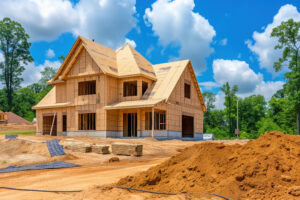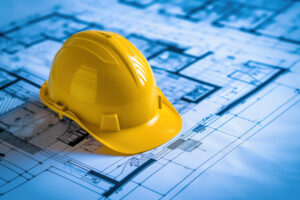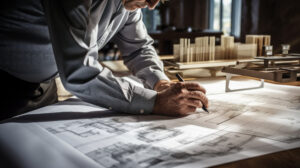Building new commercial properties can seem like a daunting task with many moving parts and decisions to make along the way. From conducting market research and drafting designs to managing contractors and handling inspections, the process demands a high level of coordination and expertise. With so many factors to consider, it helps to start by understanding the main types of projects and their differences.
This article explores the most common ones – from medical office buildings to retail centers – breaking down their key characteristics, planning requirements, and approaches. By learning the unique aspects of each, you can make informed choices upfront and set yourself up for long-term success.
Ground Up

We do all types of commercial construction in NJ!
This method is becoming more and more popular in today’s world. It entails starting with an empty plot of land and building up a new structure from scratch. It can be anything from a single-story industrial building to a multi-story high-rise office complex. Such an endeavor requires careful planning and coordination from start to finish, including obtaining necessary permits, designing the building’s layout, sourcing the necessary materials, and hiring the right team of contractors and subcontractors. With a dedicated team of professionals, it can result in innovative, energy-efficient buildings that meet the unique needs of modern businesses.
Industrial Structures
These structures are a key component in the economy because they help drive countless industries and supply the infrastructure needed for efficient production. They vary greatly in size and complexity depending on their specific purpose, from towering factories and warehouses to smaller plants and distribution centers. They are designed with safety and efficiency, utilizing heavy-duty materials and specialized equipment to handle heavy loads, high temperatures, and other challenging conditions. Every industrial structure is unique, and tailored to meet the specific needs of the industry it serves and the goods it produces.
Adaptive Reuse
It involves taking an existing building and repurposing it for a different use than what it was originally intended for. This sustainable approach not only saves historic buildings from demolition but also creates unique spaces that add character and charm to a community. Examples of such projects include converting old factories into trendy loft apartments or transforming an abandoned church into a bustling community center.
Shopping Malls
They are an incredible feat of engineering and architecture, with developers and designers working tirelessly to create the perfect layout that is both visually stunning and functionally efficient. As anyone who has visited a shopping mall knows, these buildings are not just a place to spend money, they are also a place to socialize with friends and family, try new food, and simply enjoy being part of a bustling ecosystem of commerce. Due to their complexity, shopping malls require extensive planning and execution to ensure that shoppers can navigate the space with ease. From the layout and lighting to the design of individual stores, all aspects are carefully considered to provide the ultimate retail experience.
Tenant Improvement
This involves a range of modifications such as renovating bathrooms, updating the electrical system, or rearranging the layout to accommodate the tenant’s business operations better. Though it may not involve new construction, it is still a critical component of the commercial construction industry, as it allows tenants to create a space that aligns with their brand and enhances their ability to serve customers. From small businesses to large corporations, the aim is to offer a solution for companies seeking to update their space without breaking ground on an entirely new building.
Office Buildings
These buildings are designed to accommodate the needs of businesses and organizations of all sizes and provide them with a functional work environment that is conducive to productivity. From open-concept layouts to private offices and meeting rooms, they are built to suit the unique needs of their occupants. In addition, they often incorporate advanced technological features and environmental efficiencies, such as smart lighting and energy-efficient HVAC systems. Whether it is a small startup or a large corporation, office buildings are an essential component of modern-day commercial construction.
When it comes to commercial construction projects, several different types can take place. They all not only differ in terms of the scope of work but also in how they are designed and executed. Some examples include ground-up construction, office building additions, interior fit-outs, shopping mall adaptive reuse, and tenant improvement projects. Understanding the key differences among these types is important not only for professionals but also for business owners who are looking to build a new space.




